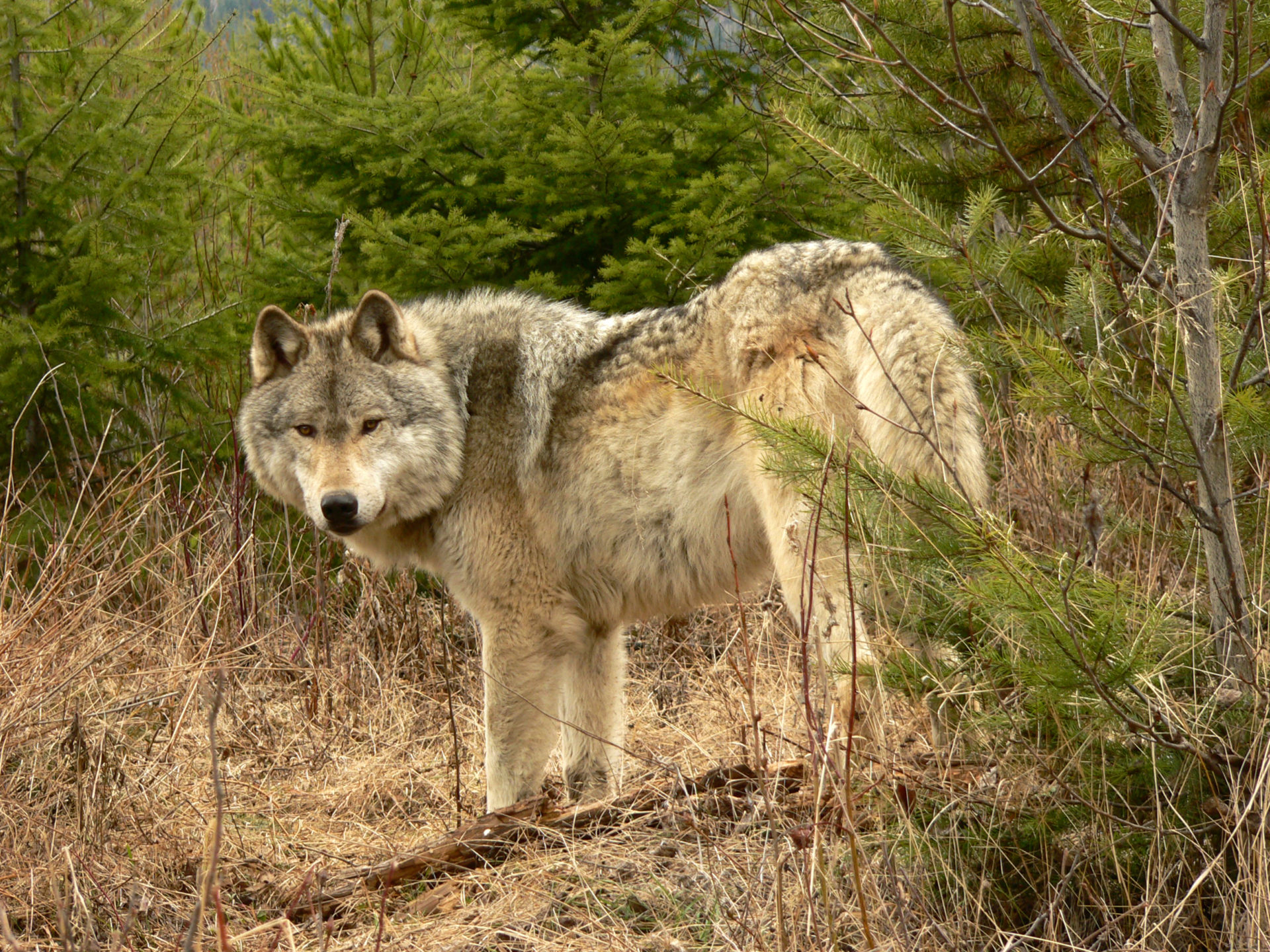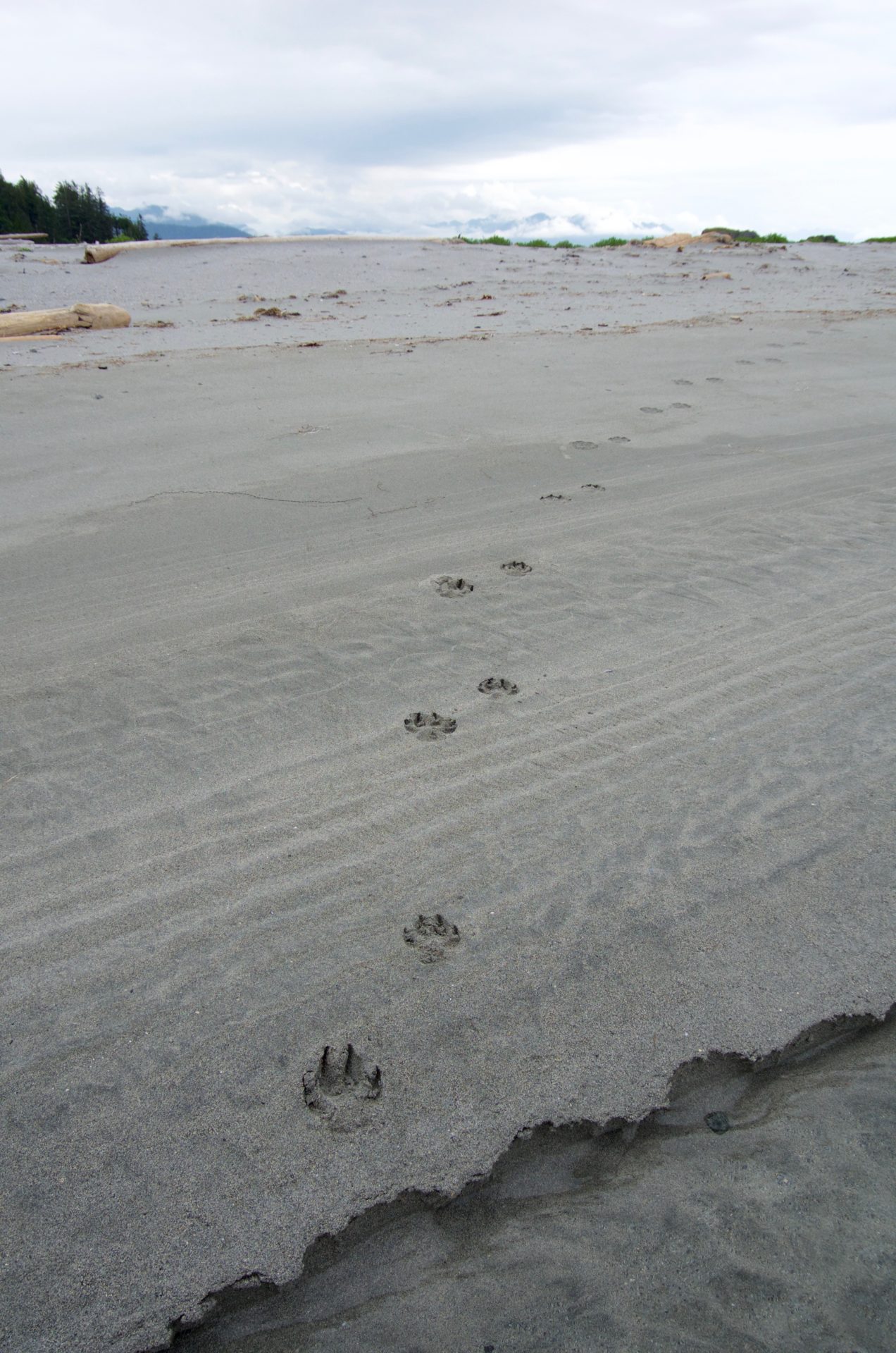There are few sounds in the wild that more definitely define wilderness than the howl of a wolf, and few animals that so strongly trigger human emotions. For some people, it is fear and loathing, remembered from childhood nursery rhymes in which the wolf is the villain. For others, the wolf is almost worshiped as the perfect example of the harmony of nature. Somewhere between is the view of a wolf as a wild animal and a symbol of wild BC, but a predator that makes a living by killing and eating other animals. When that prey includes livestock or game animals, wolves are seen as savage pests or unwanted competitors.
Advertisement

The wolf is the largest member of the dog family (Canidae). The world distribution of the grey (or timber) wolf, Canis lupus, is extensive. The species found in BC is also across Canada, into the northern US and parts of northern Europe and Asia. In fact, in the northern hemisphere, only humans have a wider distribution as a single mammal species. Wolf-like animals appear in the fossil record starting about 50 million years ago, but the grey wolf is a relatively recent addition, evolving in the last one to two million years. This animal was so well adapted, and yet so adaptable, that it displaced previous wolf-like species to achieve its present range.
At one time, grey wolves were found in almost all habitats in North America, from dry grasslands to tidewater flats to alpine forests, and from Mexico to the Arctic circle. However, early European settlers found that their enduring legends were supported when villainous wolves made off with livestock or competed for game. Their response was a nearly continuous program of trapping, shooting and poisoning that basically eliminated wolves from most of contiguous US. However, wolves survive in good numbers (about 60,000) in Canada. The most recent population estimate for BC is about 8,500 wolves and is considered stable or increasing. Wolves are not found on Haida Gwaii, or in the cities, but may be found pretty much anywhere else in the province. They are considered plentiful in much of central and northern BC, and have recently expanded their range into the Okanagan and south Thompson.
Advertisement
“Grey” wolf is one of several common names, and certainly grey is a frequent colour of their pelage, but the coats of BC wolves can vary from black through shades of grey and brown to buff or almost white. A wolf’s coat is two layers, an overcoat of long, coarse guard hairs that repel water and snow, and a thick undercoat of fine fibres that provides effective insulation against minus forty degree weather. The undercoat is shed in the warm days of spring then regrown when the mercury starts dropping again in the fall.
Grey wolves live in packs of up to a dozen related animals. Usually, only the alpha pair breed and their bond is for life. Breeding season is mid-winter and the litter (commonly five pups) is born in March or April. Pups are full grown in four months and sexually mature at three years old. Then they most often leave the family to find a mate and begin a new pack. Wolves are strongly territorial and rigourously defend their pack’s home range of about 40 square kilometres. Boundary disputes between adjacent wolf packs are common and violent, and can result in fatalities.
Advertisement
In North America, there are only a few documented cases of a human being killed by wolves. However, competition with hunters is certainly true. Wolves may kill and eat beaver, hares and small rodents, but wolf prey is most often ungulates such as deer, elk, moose, caribou and even musk ox. With teamwork and ferocity, a wolf pack dominates their environment. An adult wolf consumes an average of four kilograms of meat per day, but a feast or famine lifestyle means several days without food then gorging on as much as 10 kilograms of meat in one meal when a kill is made. When the population of one game species declines because of a severe winter, disease or habitat change, their numbers are often kept suppressed by predation, much of it by wolves. However, managing any predators, but especially wolves, through active control programs or even hunting, is politically charged and controversial.
Fear, fascination or anger, human emotions are seldom neutral when it comes to wolves.

BC’s Coastal Wolves
British Columbia is home to a distinct population of grey wolves known as coastal wolves. These wolves are only found west of the Coast Mountain Range and have even earned the nickname “sea wolf.” These coastal wolves are excellent swimmers, and their range includes islands and archipelagos on the coast.
A recent study that involved examining many thousands of wolf feces found a dramatic difference in diet between inland and coastal wolves. While wolves on the BC mainland focus on ungulates, especially deer, those on the coast eat seafood, such as salmon, seals, clams and mussels. On the outer islands, seafood can comprise up to 90 per cent of a wolf ‘s diet. Even on islands closer to the mainland, wolves may have a genuine “surf and turf” diet, of 50 per cent meat and 50 per cent seafood.